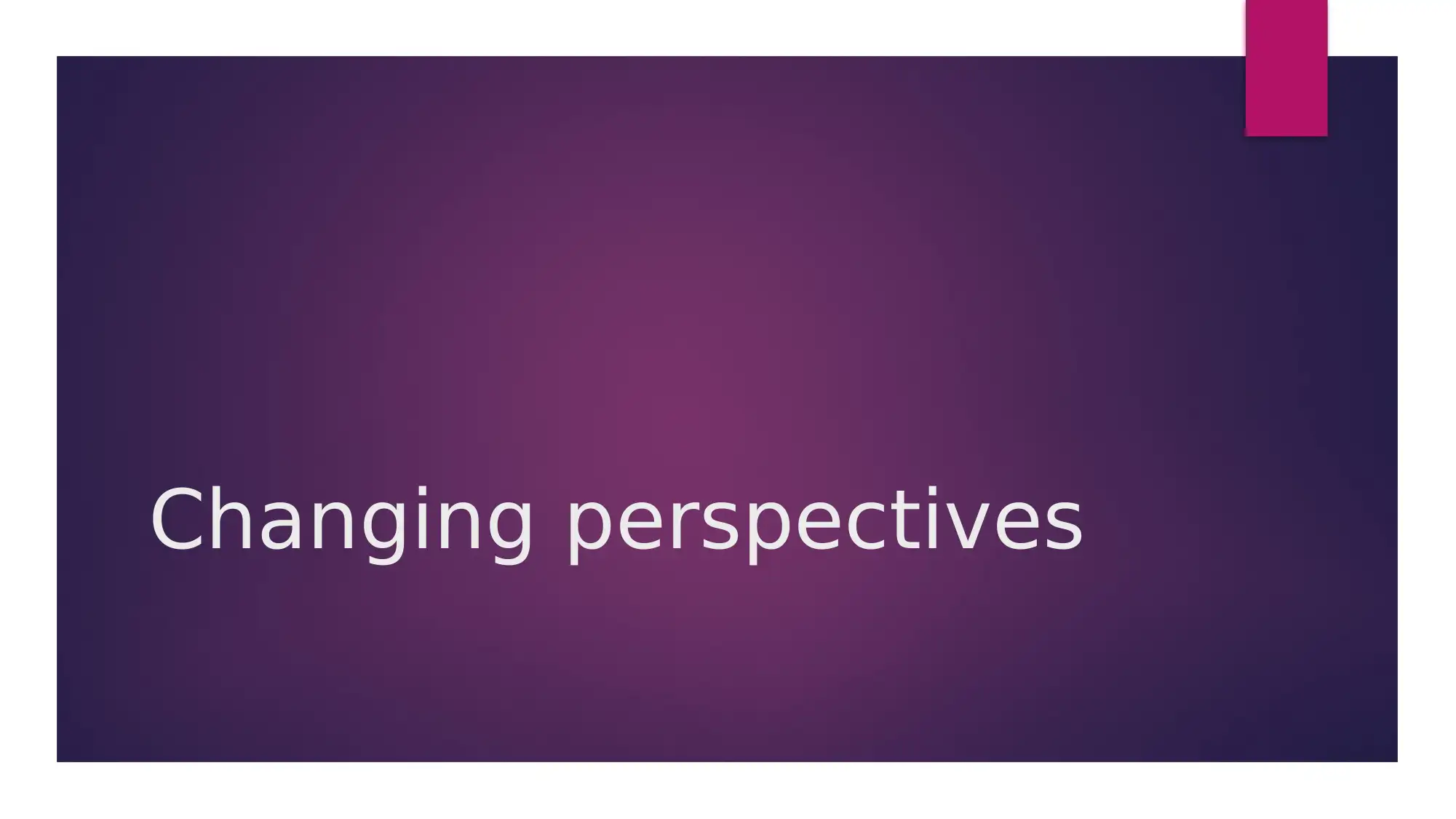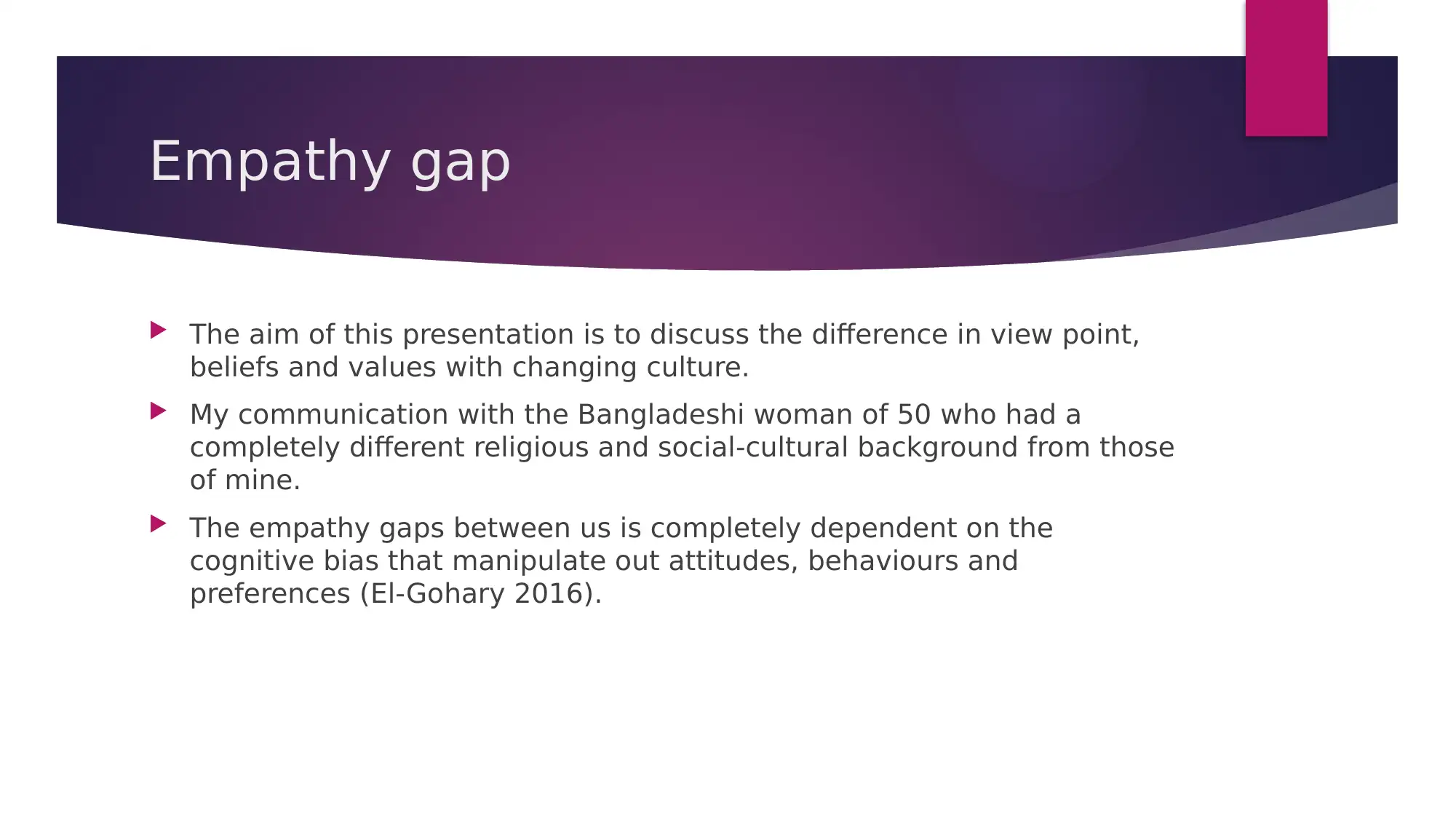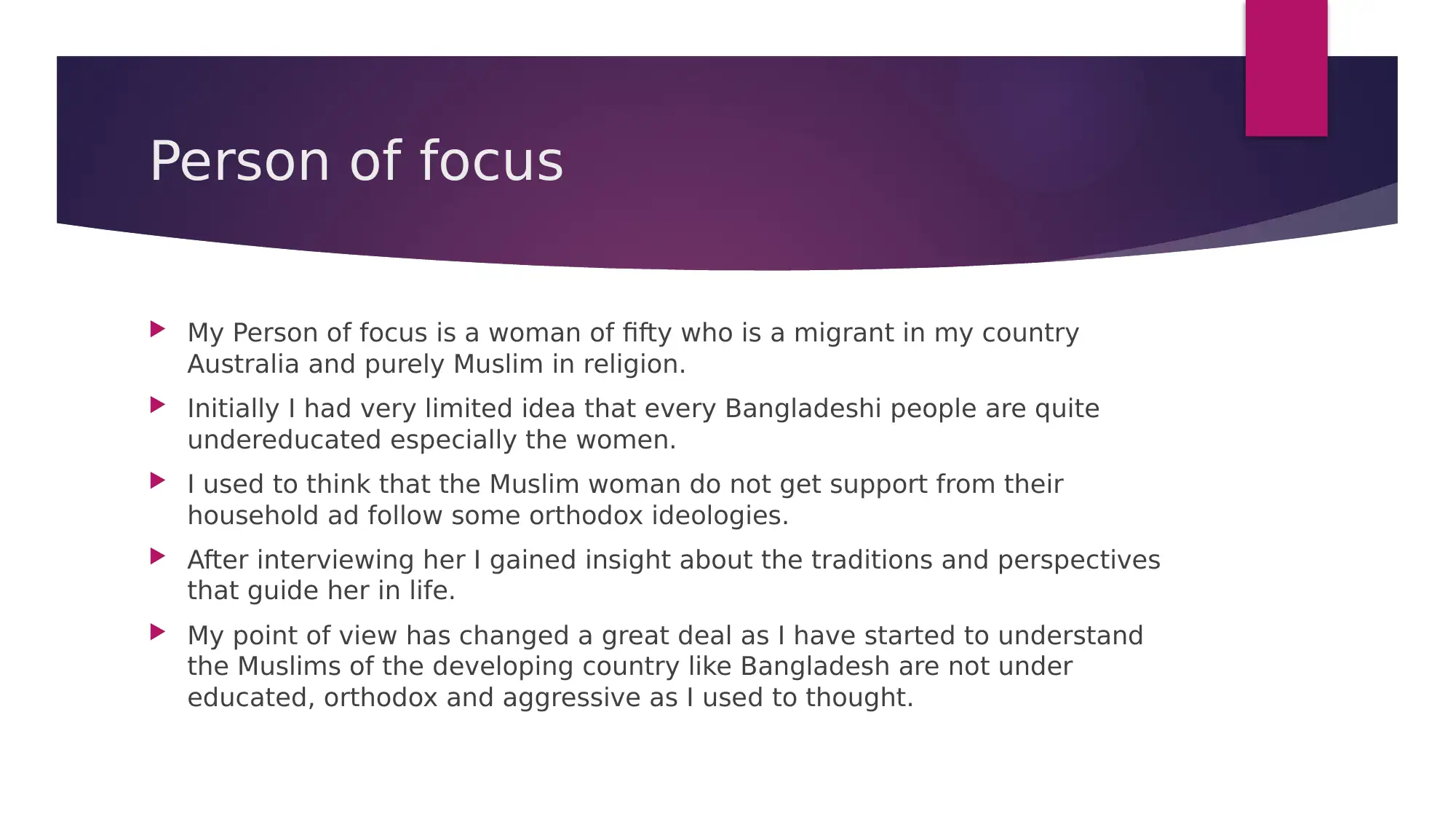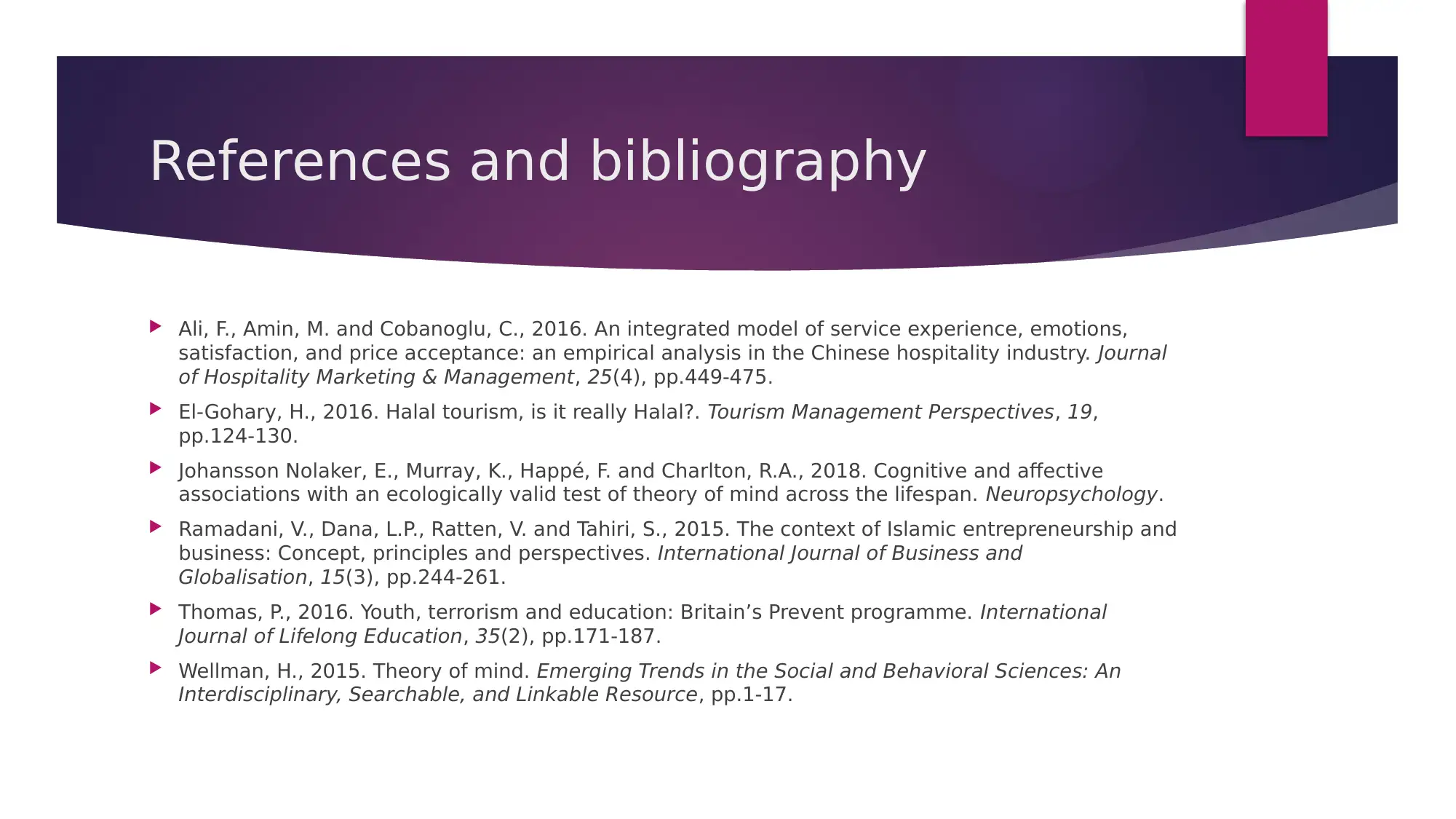Exploring Empathy Gap: Changing Perspectives on Beliefs and Values
VerifiedAdded on 2023/06/07
|6
|536
|211
Presentation
AI Summary
This presentation discusses the differences in viewpoints, beliefs, and values influenced by changing cultures, focusing on a communication experience with a 50-year-old Bangladeshi Muslim woman in Australia. It highlights the initial biases and limited understanding of Bangladeshi people, particularly women, and how interviewing the woman provided insights into her traditions and perspectives. The presentation uses the theory of mind to explain how empathetic communication revealed the depth of her beliefs and thoughts, leading to a shift in perspective and the elimination of biases regarding Muslim women from developing countries like Bangladesh. References to academic sources support the discussion on empathy, cultural understanding, and cognitive biases.
1 out of 6








![[object Object]](/_next/static/media/star-bottom.7253800d.svg)